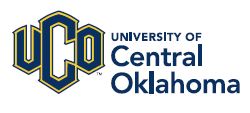Below is a summary of the abstract you submitted. Presenting author(s) is shown in bold.
If any changes need to be made, you can modify the abstract or change the authors.
You can also download a .docx version of this abstract.
If there are any problems, please email Dan at dar78@pitt.edu and he'll take care of them!
This abstract was last modified on March 15, 2023 at 10:48 p.m..

Antibiotic resistance has driven an increased interest in bacteriophage research during the past decade. Throughout Fall 2022 and spring 2023, a bacteriophage was isolated from a soil sample collected in Edmond and named DrWorm. After being purified, DrWorm was extensively characterized. We tested the host range and temperature stability of our virus. The phage particle was visualized using transmission electron microscopy. The phage genomic DNA was extracted using PCI method. The extracted DNA was subjected to restriction digest using EcoRI, HaeIII, HindIII, SacII, SalI, and NspI. DrWorm has Siphoviridae morphology with a long flexible tail. Our assay confirms that the virus is a lytic virus and does not become a prophage. DrWorm has a very narrow host range as it can only infect Microbacterium paraoxydans. The phage is stable and retains its infectivity up to 60C. at 65C the phage is inactivated. Our restriction digest analysis shows that the phage genome has multiple restriction sites for HaeIII and SacII. Our future work will involve testing the pH stability and sequencing our phage genome.
